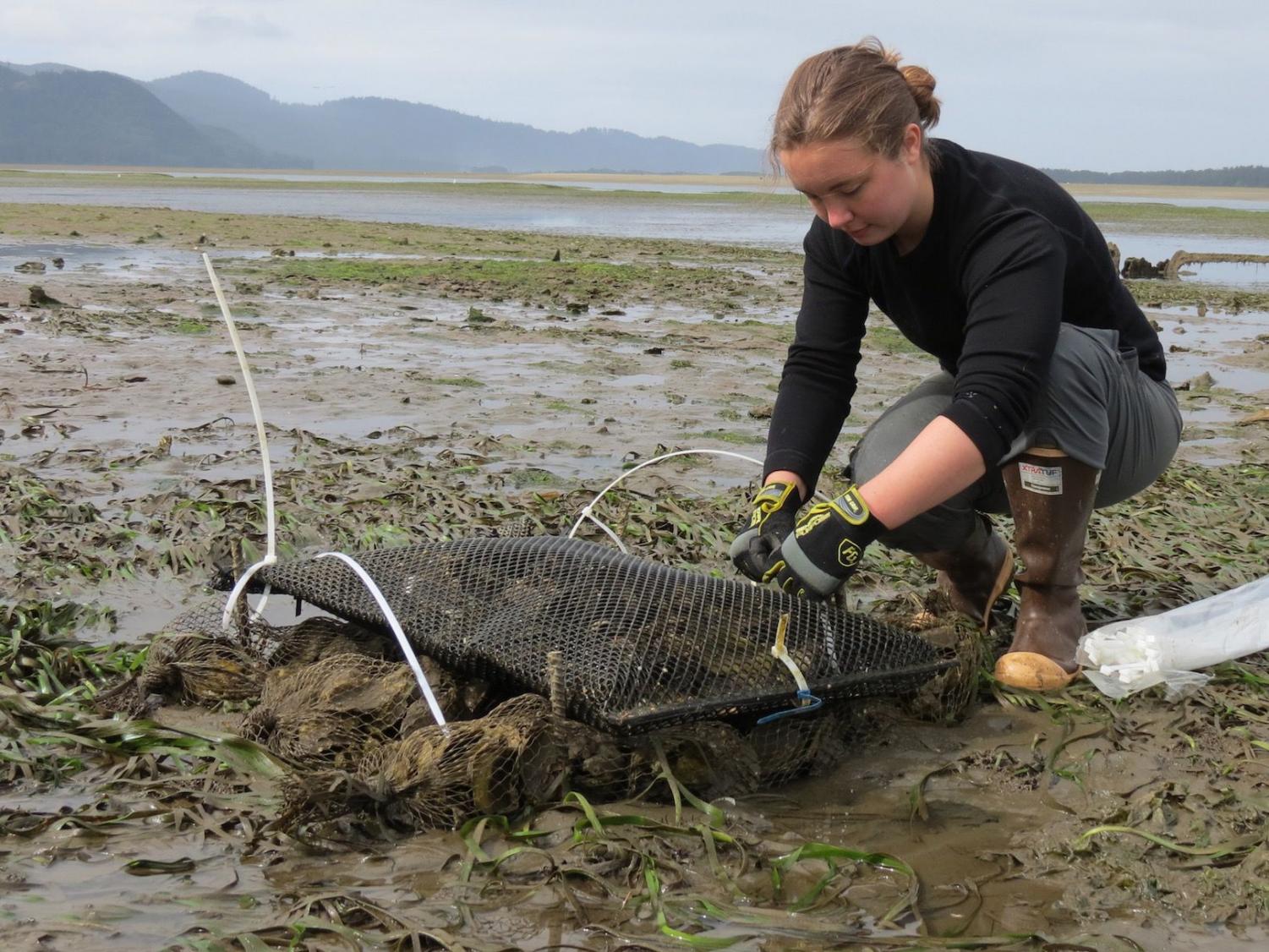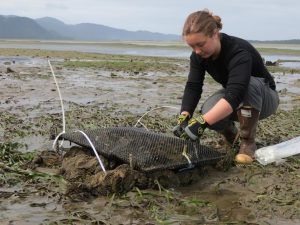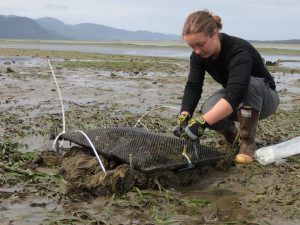Episode 3: How can humans help oysters adapt to stresses from ocean acidification?
May 14, 2018
The Pacific Northwest supports a 270 million dollar per year shellfish industry. Human-induced climate change has increased global levels of atmospheric carbon dioxide. More carbon dioxide then enters ocean water, making it more corrosive. As a consequence, oysters and other shellfish that rely on alkaline seawater conditions to precipitate calcium carbonate and build their shells find it harder to grow. The Whiskey Creek Shellfish Hatchery in Tillamook, which supplies Netarts Bay with oysters and also sells larvae to farmers across the Northwest, experienced larval die-offs of nearly 75% in 2007.
This catastrophe spawned increased research efforts to prevent future die-offs. Sophie Wensman, a second-year Ph.D. student working with Dr. Alyssa Shiel in
OSU’s College of Earth, Ocean and Atmospheric Science, is working on an unusual new way of growing oysters in Netarts Bay. She is placing large bags of dead oyster shells in the bay and then growing oysters on top of them. Similar to antacids, dead oyster shells neutralize corrosivity in the water by dissolving into carbonate, which the live oysters can then incorporate into their shells. Think of it as a short-circuited version of the circle of life.
Besides investigating how these oysters will grow, Sophie plans on using her background in chemistry to develop a technique to examine how ocean chemistry is recorded in the oysters shells, layer by layer. Like all of us, oysters are not perfect. Besides calcium carbonate, they incorporate some impurities into their shells, like certain forms of uranium carbonates. Based on what we know about forams, sea-dwelling zooplankton that also mineralize calcium carbonate shells, Sophie expects the amount of uranium the oysters mineralize will increase under more corrosive conditions, where less carbonate is available. To accomplish this, she will use a technique called laser ablation mass spectrometry, where she will shoot lasers onto samples of oyster shells. The shell bits will vaporize, and the machine will record the amounts of uranium and calcium present. Looking at this uranium-to-calcium ratio and how it relates to the measured seawater chemistry in Netarts Bay could be helpful for other oyster growers to see whether their animals are also experiencing stress from ocean acidification.
Sophie’s mother, who home-schooled her until the age of twelve, instilled in her a curiosity about science and the natural world from a young age. At the age of eight, Sophie became the youngest Marine Docent through the University of New Hampshire’s Sea Grant program. She also worked as a rocky shore naturalist and camp counselor at the Seacoast Science Center in Rye, NH, teaching people of all ages about the rocky shore ecosystem. Sophie attended the University of Michigan studying secondary science education, but interning with Dow Corning and stumbling across an interview with a chemical oceanographer on the Discovery Channel’s Shark Week program provided her another career idea. This led her to an NSF-sponsored Research Experience as an Undergrad (REU) program at the University of Washington, a 36-day research cruise between Hawaii and Alaska, and a job as a technician in Joel Blum’s lab at the University of Michigan studying mercury isotope geochemistry. Sophie intends to continue her passions of education and chemical oceanography by pursuing an academic position at a research university.
Tune in to 88.7 FM at 7:00 pm Sunday evening to hear more about Sophie and her research on oyster health and chemistry, or stream the program live right here.
You can download her iTunes Podcast Episode!




